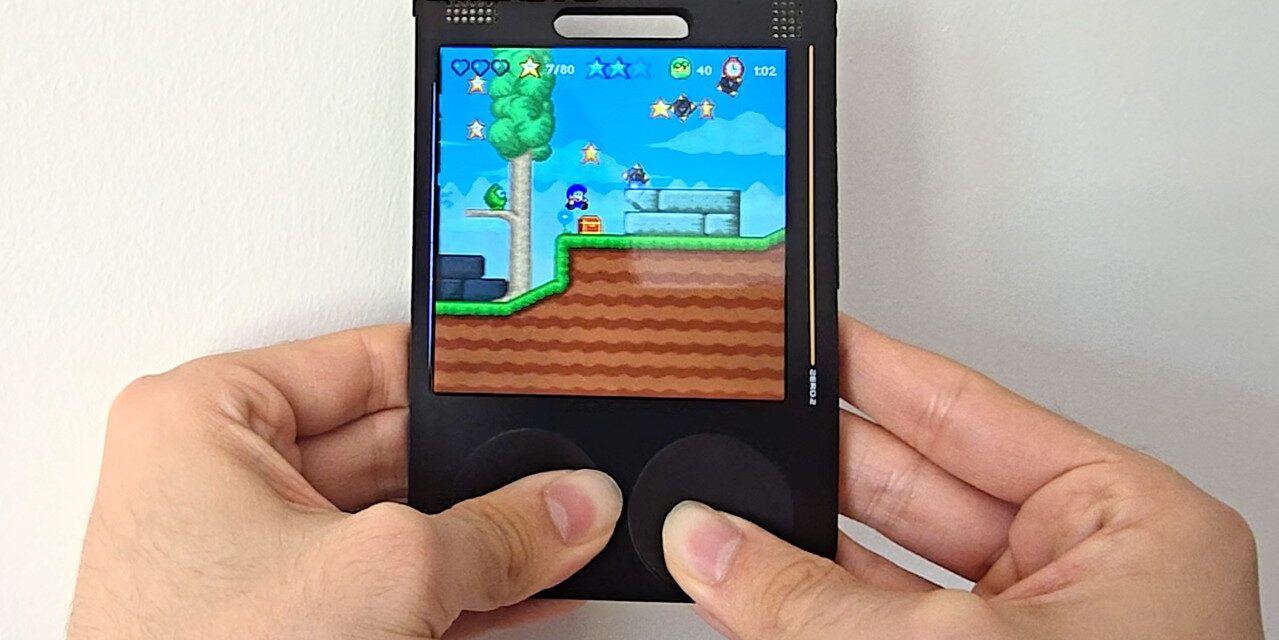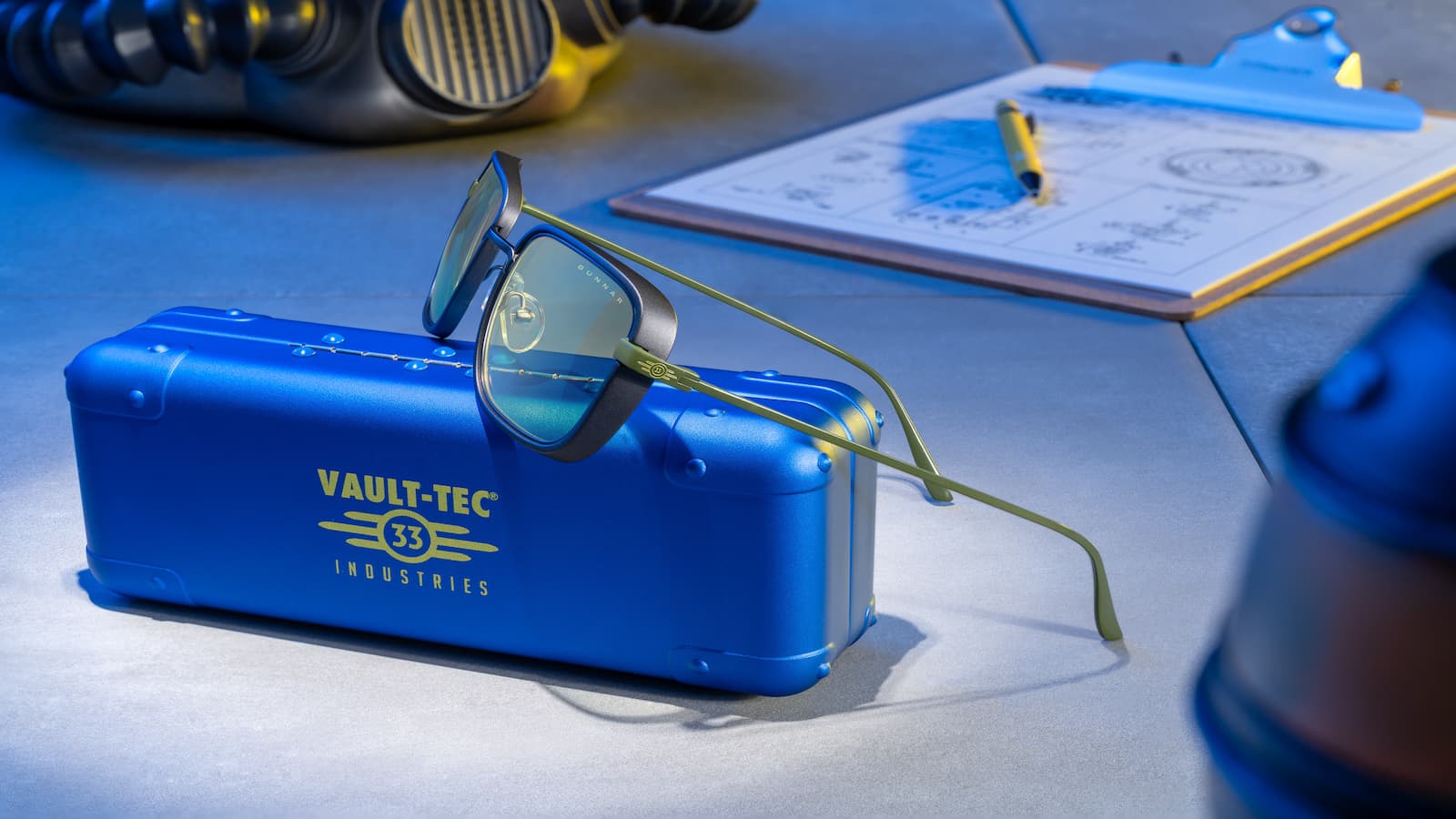I’m always a fan of new toys and gadgets that people come up with. More often than not, you get knock-off, dime-a-dozen systems you’d find on Temu or in a flea market. But, once in a while, a new, non-mainstream device actually looks good. The GamerCard has a really cool gimmick, and it rocks a Raspberry Pi inside of it.
GamerCard is like what the name insinuates. It’s a whole game system in the shape and size of a card. Sitting at just over 5 inches in length and just under 3 1/2 inches in width, Gamercard might be one of the thinnest gaming machines that comes to mind for me, being super thin at just about 1/4 of an inch thick. Also, I should mention that the system is only 100 grams, which means it’s just over 3.5 ounces. And, to show how easy it is to grab and go, there’s a small hole at the top (like a peg hole in a retail package) to give it a “grab-and-go” feel.
This isn’t just some cheap console you can pick up in a flea market booth. GamerCard is packed with power and good specs as well. At its core, it’s running off a Raspberry Pi Zero 2W with a Quad-core ARM Cortex-A53 processor, complete with a heatsink for if you want to overclock it. Though it doesn’t say exactly how long it lasts, you’re going to get a 1600mAh Li-Po rechargeable battery that gives plenty of hours of use before the need to charge.
In addition, the 4-inch IPS display gives nearly as much screen space as the top screen of a Nintendo 3DS (for comparison). That’s rocking a 720×720 display and 60fps on this tiny beast. Considering this is meant to be great for emulation and arcade-style games, you bet that’s plenty of room and power. But, if it isn’t, you’re also getting USB-C and HDMI ports on the side to turn the system into a (technically) full gaming rig. To put it simply, it’s a tiny powerhouse with a lot of functionality.
Speaking of the games, for once, one of these machines isn’t just touting 500-in-1 knock-off versions of old games like a lot of them do, most of which don’t even work properly. This one comes prepared for gamers with a pre-installed desktop launcher and a custom Pi Game App, which has been modified to work specifically for GamerCard. You can also utilize apps like Recalbox, RetroPie, and Lakka to emulate thousands of games available out there that work on the Raspberry Pi.
The Pi Game App gives fast track access to specially optimized games for the system, such as Saboteur, a trilogy of Ninja stealth action-adventure games that are out on the Nintendo Switch already, but they are being optimized for the GamerCard. You’ll have two action games pre-loaded into the system as well, Bloo Kid 2 (a pixelated platformer) and AstroBlaze DX (a rhythm-based space shooter).
But, wait! That’s not all! Similar to other retro-focused systems of this nature, GamerCard is designed in a way that helps you develop games for it. It’s fully compatible with PICO-8, a “fantasy console for making, sharing, and playing tiny games and other computer programs.” Plus, GamerCard also supports coding development in MicroPython, C, C++, BASIC, and more. So, they give you the options to build to your heart’s content.
A quick gaming history lesson about Sinclair – from the ZX Spectrum to the GamerCard
The system was made by Grant Sinclair. While this may be the first time you’ve heard that name in terms of gaming, he’s an inventor who has worked on various inventions over the years. His uncle, on the other hand, might be very familiar sounding to retro gaming enthusiasts, Sir Clive Sinclair of Sinclair Research.
Sinclair put out the ZX Spectrum in 1982 (1983 for the US), known for being an early home computer and gaming system. The ZX Spectrum may not have been the most popular gaming system back then, especially around that era, considering the infamous video game crash of 1983 that hit the US before the ZX Spectrum’s release that November.
While the ZX Spectrum ultimately sold 5 million units total, it just didn’t get the US gaming and computing market the same way that Commodore and Atari did.
His nephew, Grant, is continuing Sinclair’s gaming legacy with the GamerCard.
I’m always a fan of retro gaming-focused consoles, like the Analogue Pocket or the Playdate, and am excited to see what eventually comes of GamerCard. I’ll be keeping my eye on it closely.
You can check out more details about the system and a more detailed history of Sinclair from their official post on LinkedIn. You can also pick it up right now for £125.00 the equivalent of $169.97 USD) on the official website.





